Solving Tea Branch Blight
New Sun Oversea products effectively solve tea branch blight, improve soil fertility and healthy root zone microbial communities, promote root growth and bud development, stop branch blight spread and regenerate new buds, restoring tea garden vitality and natural ecology while increasing yield.
Taiwan tea has rich varieties and abundant history, being a world-renowned tea production area. But in recent years, Taiwan's tea industry faces many challenges, including soil continuous cropping obstacles and tea branch blight problems. These problems not only affect tea quality but also reduce tea yield.
New Sun Oversea's Agricultural Active Water is manufactured by NS BIO. These multi-strain microbial communities can promote soil improvement, supplement balanced soil microbial communities, restore healthy soil microbial composition. Simultaneously, these materials can release soil nutrients, helping tea trees better develop roots, thereby overcoming soil continuous cropping obstacles and preventing tea branch blight.

1 Efficacy in Controlling Tea Branch Dieback
What is Tea Branch Dieback?
There are many reasons why tea plants are susceptible to diseases, including poor growing environment, pests and diseases, viral infections, and unsuitable climate. Common tea plant diseases include Branch Dieback, Leaf Spot Disease, Brown Blight, Gray Blight, Flush Blight, and Algal Leaf Spot.
Among these, Tea Branch Dieback is a tricky problem in Taiwan's tea cultivation. It has a profound impact on tea yield and is highly contagious. Tea Branch Dieback is a contagious disease in tea growing areas caused by fungi, where branches and leaf surfaces first fade, then the entire branch wilts and dries up. In severe cases, it can invade the main trunk, leading to the death of the entire plant.
What is the relationship between Tea Branch Dieback and Soil Continuous Cropping Obstacles?
Soil continuous cropping obstacles refer to the phenomenon where, during long-term cultivation of the same crop, the soil experiences problems such as declining fertility and the accumulation of pathogens, leading to crop diseases or reduced yield. This is because long-term cultivation of the same crop destroys the soil's microbial community, resulting in a single and impoverished microflora, a disrupted balance, and a gradual loss of soil nutrients.
Continuous cropping obstacles mean that planting the same crop in the same location for many consecutive years increases the number of pathogens and parasites in the soil, gradually depletes soil nutrients, leading to reduced crop yield or pathological changes. Branch Dieback refers to a disease that occurs during the growth of tea plants due to soil and environmental reasons, with common symptoms including yellowing leaves, branch dieback, and failure to produce new flushes. Therefore, there is a close relationship between continuous cropping obstacles and Branch Dieback, as continuous cropping obstacles can exacerbate the occurrence of Branch Dieback.
Why are we able to control Tea Branch Dieback?
Agricultural Active Water is produced using NS BIO. It promotes the proliferation of beneficial bacteria in the soil, helping to restore a healthy soil microflora. Additionally, Agricultural Active Water, through its rich multi-species microbial community, can effectively inhibit the growth of pathogens, reduce and control diseases, prevent the accumulation of harmful substances in the soil, and reduce the use of pesticides.
For tea plants, Agricultural Active Water can aggregate the soil, release its nutrients, help the tea plants to develop better root systems, thereby overcoming continuous cropping obstacles, and simultaneously improve the soil's fertility and water retention capacity, effectively enhancing the soil environment.
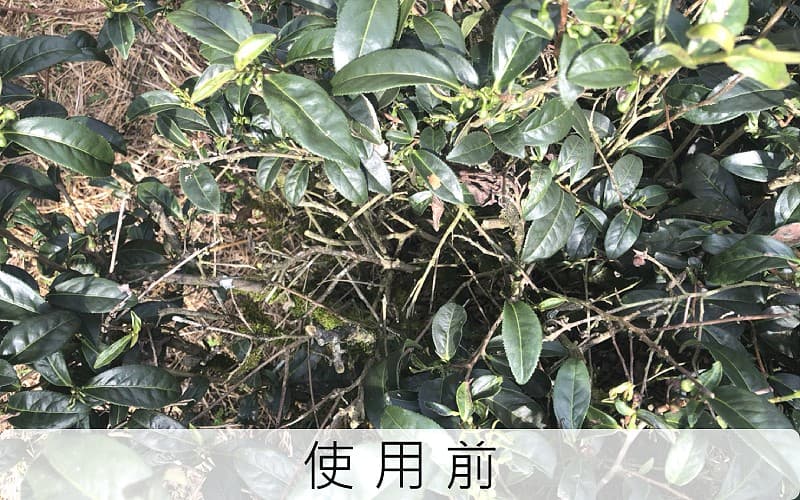

The main uses of Agricultural Active Water for tea garden rejuvenation are as follows:
Solving Tea Branch Dieback
The use of Agricultural Active Water for tea garden rejuvenation can help solve Tea Branch Dieback. Tea Branch Dieback is a fungal disease that primarily attacks the branches of tea plants, leading to branch wilting, breaking, and death. The multi-species microbial community in Agricultural Active Water has antifungal capabilities that can counteract the pathogenic fungi causing Tea Branch Dieback, inhibiting their growth and reproduction, thereby reducing the incidence of the disease.
Furthermore, the multi-species microbial community in Agricultural Active Water can enhance the tea plant's immunity and resistance. When a tea plant is attacked by disease, the strength of its immune system directly affects its resistance to pathogenic fungi. The multi-species microbial community can form a symbiotic relationship with the tea plant's roots, releasing beneficial substances and growth hormones, promoting the regulation of the tea plant's immune system, and increasing its resistance to Tea Branch Dieback, thereby reducing the occurrence and spread of the disease.
In addition to improving the soil environment, the multi-species microbial community of Agricultural Active Water further reduces the occurrence of Tea Branch Dieback; it can also improve soil structure, increase soil aeration and drainage, reduce the proliferation and spread of soil-borne pathogens, thereby reducing the risk of Tea Branch Dieback.
Promoting Root Development
The use of Agricultural Active Water for tea garden rejuvenation can promote the rooting of tea plants. The soil probiotics in Agricultural Active Water can increase the number and variety of beneficial microorganisms in the soil. These probiotics form a symbiotic relationship with the plant roots, promoting root growth and development through root exudates and changes in the root surface structure. They can decompose organic matter and release nutrients, providing energy and sustenance for plant growth, thereby stimulating root growth.
Secondly, Agricultural Active Water has the characteristics of improving soil structure and increasing soil aeration. Good soil structure and aeration are very important for root growth. The multi-species microbial community of Agricultural Active Water can decompose organic matter and improve the soil structure, making the soil loose and increasing the penetration and growth space for roots. At the same time, the activity of the multi-species microbial community also helps to form soil aggregates, increasing soil stability and water retention capacity, providing a better environment for the roots.
Furthermore, the multi-species microbial community of Agricultural Active Water can also secrete growth hormones and other substances that promote root growth. These substances, including plant hormones like auxin and gibberellin, can stimulate the division and elongation of root cells, promoting root development. They can also increase the absorption area and capacity of the roots, improving the plant's efficiency in absorbing water and nutrients.
Promoting Bud Growth
The use of Agricultural Active Water for tea garden rejuvenation can promote the growth of tea plant buds. Agricultural Active Water contains abundant soil probiotics, which form a symbiotic relationship with plant roots and can release various growth hormones and beneficial substances. These growth hormones include plant hormones like auxin and gibberellin, which promote the growth and differentiation of plant buds. Through symbiosis with probiotics, tea plant buds can benefit from the stimulation of these hormones, promoting their growth and development.
Secondly, the multi-species microbial community of Agricultural Active Water can decompose organic matter, releasing nutrients and energy required for tea plant bud growth. These nutrients include elements such as nitrogen, phosphorus, and potassium, as well as trace elements and organic substances. These nutrients are essential for the growth and development of tea plant buds. Through the activity of the multi-species microbial community, the tea plants can more effectively acquire these nutrients, promoting the growth and strengthening of the buds.
In addition, Agricultural Active Water also features improved soil structure and aeration. Good soil structure and aeration contribute to root growth and development, which is also crucial for bud growth. The multi-species microbial community of Agricultural Active Water can improve soil structure, increasing soil looseness and permeability, providing better root growth space and nutrient absorption capacity, which positively promotes bud growth and development.
Soil Improvement
The use of Agricultural Active Water for tea garden rejuvenation can improve the soil. The multi-species microbial community of Agricultural Active Water has the ability to decompose organic matter. These microorganisms can decompose organic residues, fallen leaves, and root exudates in the tea garden, converting them into nutrients that plants can absorb and utilize. This increases the organic matter content in the tea garden soil, enhancing the organic matter percentage, which helps to improve soil structure and fertility.
Secondly, the multi-species microbial community of Agricultural Active Water can improve soil structure. These microorganisms can decompose organic matter in the soil, releasing clay minerals and organic colloids, promoting the formation and stabilization of soil structure. Improving soil structure can increase soil aeration, drainage, and water retention capacity, which aids in the growth of tea plants and the development of their root systems.
Furthermore, the multi-species microbial community of Agricultural Active Water can inhibit the growth and reproduction of soil-borne pathogens. Some microorganisms have the ability to counteract pathogens, producing antibacterial substances or competing with pathogens for nutrients, thereby reducing the occurrence of diseases. This biological control effect helps to improve the health status of the tea garden soil.
What is the difference from general chemical agents?
| Item Name | Agricultural Active Water No. 2 | General Chemical Agents |
|---|---|---|
| Solving Tea Branch Dieback | Can be used throughout the entire growth period, helping tea plants grow healthily, effectively improving Tea Branch Dieback and preventing pests and diseases | Continuous use leads to tea plant resistance, requiring the use of more types of agents to suppress the onset of disease, a repetitive and burdensome cycle |
| Promoting Root Development | Can increase the number of soil probiotics, promoting tea plant root growth and improving the tea plant's efficiency in absorbing water and nutrients | Chemical damage affects the soil environment, reducing the tea plant's ability to root down, leading to poor nutrient absorption, making the tea plant naturally prone to disease |
| Promoting Bud Growth | Enhances the tea plant's immunity, promotes the continuous production of tender flushes, extending the tea plant's harvest lifespan | Excessive use of growth hormones is prone to causing mutations in tea plants, resulting in difficult bud growth or leaf deformation |
| Soil Improvement | Can increase soil organic matter, improve soil-borne diseases, enhance soil structure, and increase soil aeration, drainage, and water retention capacity | Overuse of agents can lead to soil depletion, soil compaction, and other problems, exacerbating the occurrence of Tea Branch Dieback |
What is the actual improvement efficacy in solving Tea Branch Dieback?
Tea Plants Suffering from Tea Branch Dieback Before Pruning
Location: Gongxie Community, Mingjian, Nantou
Date: December 1, 2022
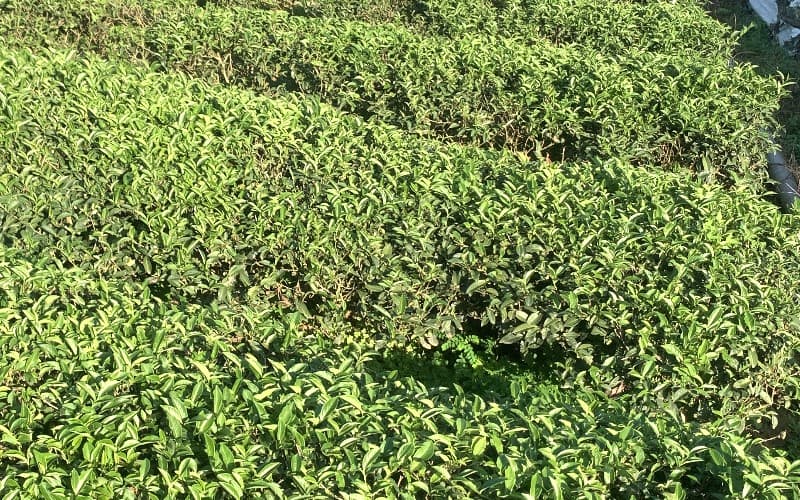
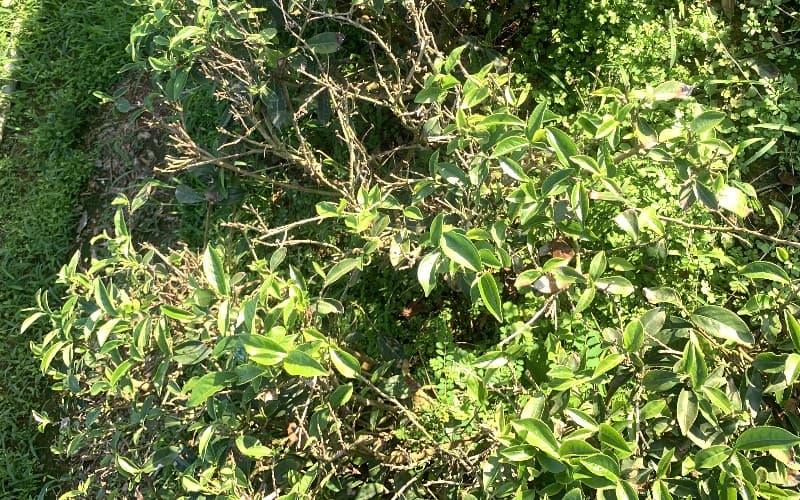
Tea Plants After Pruning and Application of Agricultural Active Water No. 2
Location: Gongxie Community, Mingjian, Nantou
Date: December 16, 2022
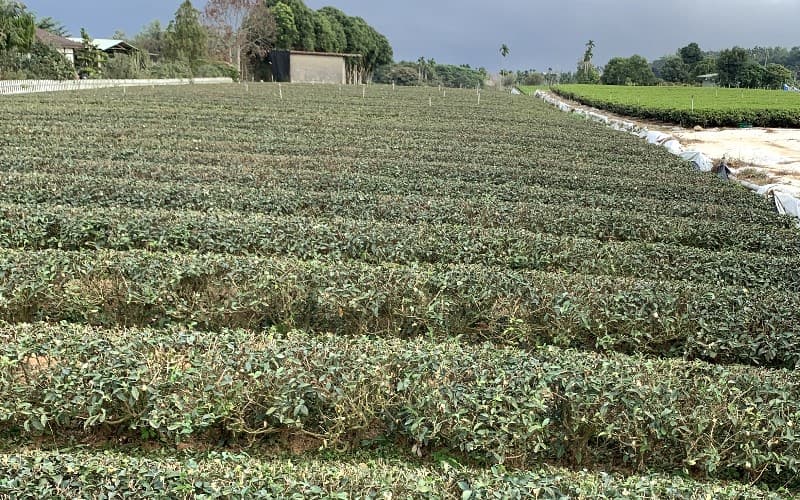
Tea Plants Sprouting New Flushes During the Improvement Period
Location: Gongxie Community, Mingjian, Nantou
Date: January 10, 2023
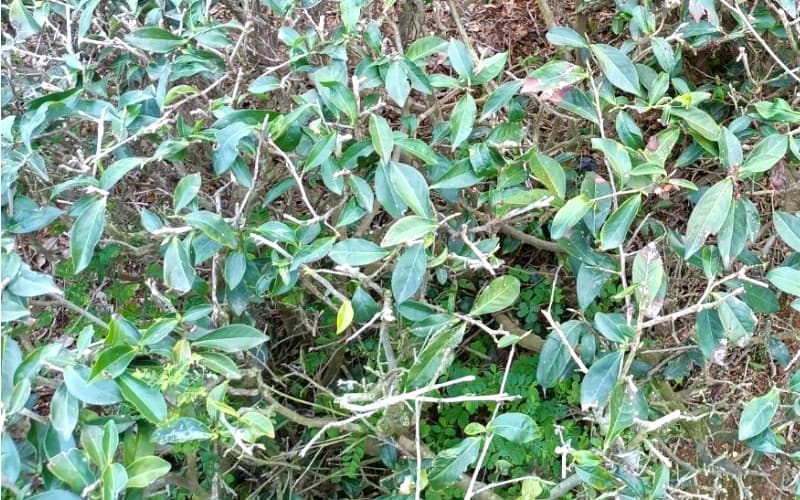
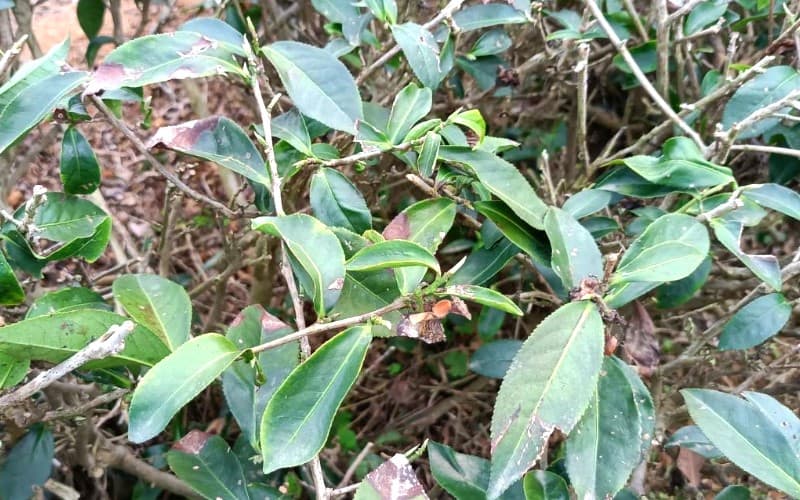

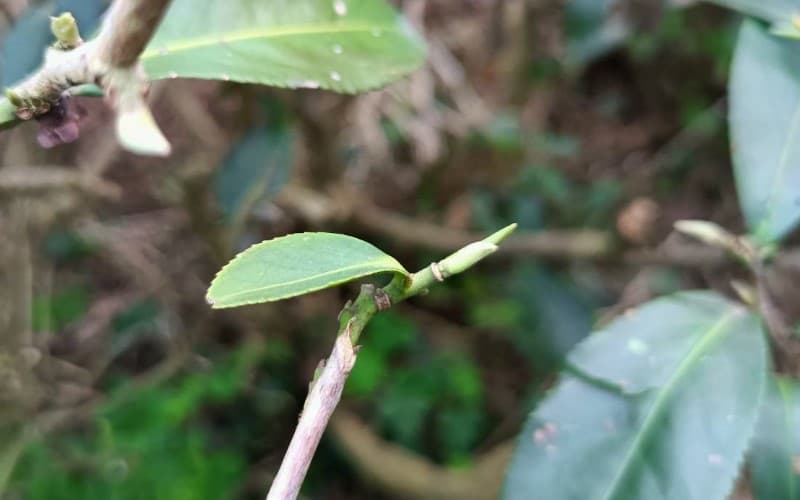
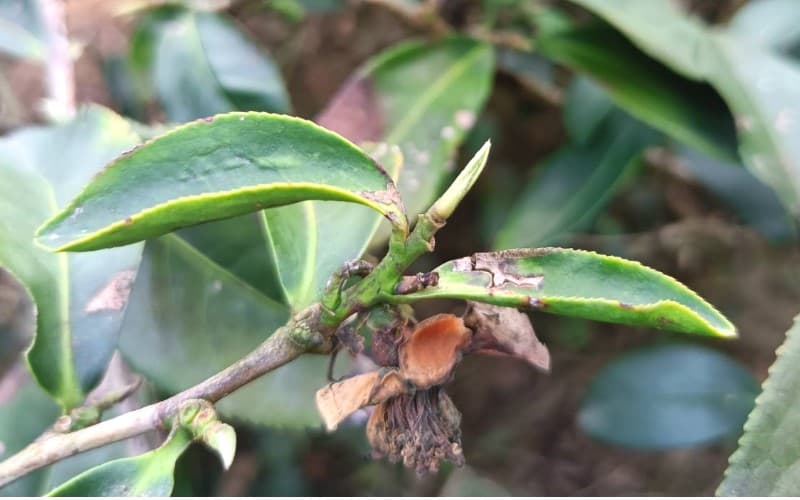
2 Application Methods for Controlling Tea Branch Dieback
What are the Suggested Application Methods?
| Purpose of Use | Agricultural Active Water No. 2 Dosage | Dilution Ratio |
|---|---|---|
| When crop symptoms appear | 5-10 liters used weekly | 50-100 times |
| Routine management | 5-10 liters used 1-2 times per month | 100-200 times |
Note 1: The suggested dosages above are per 0.1 hectare (one *fen* of land).
Note 2: It is recommended to combine the above dosages with Renwei Brand Enhanced Humic Substance to increase soil probiotics. Using them together is complementary, and following seasonal farming practices while nourishing the soil ecological chain can maintain the vitality of the land.
What are the Product Application Advantages?
- Specializes in continuous cropping obstacles, restoring microbial balance, activating the soil, and recovering soil fertility.
- Contains small-molecule chitin (chitosan), cultivating beneficial bacteria to combat nematodes.
- Contains abundant trace elements, secondary fermentation products, and amino acids.
- Can be used throughout the entire growth period, compatible with existing farming procedures, facilitating field management.
What are the Recommended Application Timings?
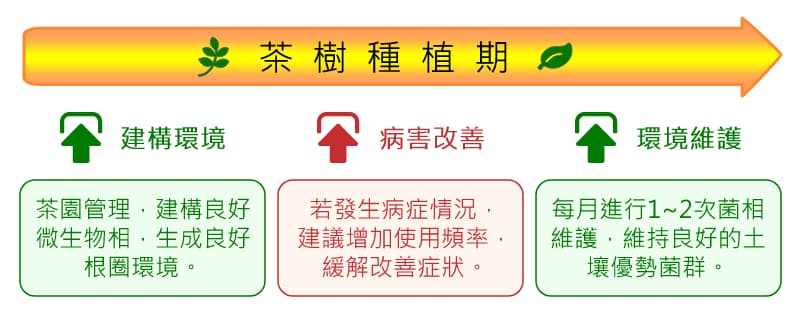
The application timings during the tea plant cultivation period are:
- Environmental Construction: Tea garden management, establishing a good microbial community, and creating a healthy rhizosphere environment.
- Disease Improvement: If symptoms of disease occur, it is recommended to increase the application frequency to alleviate and improve the symptoms.
- Environmental Maintenance: Conduct microbial community maintenance 1-2 times per month to sustain a dominant beneficial microbial population in the soil.

3 Etiology and Prevention of Tea Branch Dieback
What are the contributing factors to Tea Branch Dieback?
The symptoms of Tea Branch Dieback include: yellowing of leaves, loss of leaf luster, leaves turning from pale green to pale brown, dark brown, shedding of withered leaves, and browning of branches. The pathogen for branch dieback usually invades the branches through wounds, then forms pycnidia on the branches and releases conidia, causing damage to the branches and eventually leading to browning and drying up.
The contributing factors leading to Tea Branch Dieback are as follows:
- Climatic Factors: High temperature, drought, and strong winds make tea plants more susceptible to branch dieback.
- Soil Factors: Too low or too high humic substance content in the tea plant rhizosphere, or incorrect pH value, can make tea plants more susceptible to branch dieback.
- Fertilization Factors: Excessive or insufficient fertilization affects the growth of tea plants, making them more susceptible to branch dieback.
- Pest and Disease Factors: Tea plants that are attacked by pests and diseases are more susceptible to branch dieback.
- Continuous Cropping Factors: Long-term continuous cropping in the same area, using chemical fertilizers and pesticides leading to soil deterioration and impoverished microflora, increases problems such as tea branch dieback.
How to prevent Tea Branch Dieback?
The main cause of Tea Branch Dieback is the lack of necessary nutrients or poor environmental conditions in the soil. When Tea Branch Dieback occurs, symptoms include branch dieback, wilting, and leaf yellowing. Therefore, measures to prevent Tea Branch Dieback are as follows:
- Soil Management: Regular application of organic fertilizer can provide tea plants with rich nutrients and beneficial microorganisms, promoting healthy growth.
- Water Management: Maintaining appropriate soil moisture can prevent water deficit in tea plants.
- Pest and Disease Control: Regularly inspect tea plants, and if pests or diseases are found, use effective control measures early.
- Tea Plant Canopy Management: Prune tea plants appropriately to maintain a moderate leaf area, promoting healthy growth.
- Proper Plant Conservation: Ensuring suitable environmental conditions for the tea plants can reduce the occurrence of branch dieback.
Why can traditional pesticides not fundamentally cure Tea Branch Dieback?
Traditional spraying of fungicides, sanitation, and irrigation management can control part of the spread, but many severely affected tea gardens show phenomena like soil hardening and compaction, shallow or weak tea roots that cannot extend, and other soil-borne diseases. The long-term impact shortens the lifespan of the tea plants: "Previously, tea plants could be harvested for almost 20 years, but now the plant vigor weakens after 10 years, and they have to be dug up and replanted after a few more years." Therefore, a poor soil environment weakens the vegetative organs (roots) of the tea plant, affecting its immunity. Shallow roots also hinder the tea plant's ability to anchor down and absorb water independently, affecting its self-management of water. Coupled with increased dependence on chemical applications and dry external conditions, all these factors combine to cause the major outbreak of Tea Branch Dieback, which constantly spreads within the tea area and fundamentally cannot be cured.
Thus, the foundation for controlling Tea Branch Dieback is a healthy soil environment. Our customers use Agricultural Active Water, combined with Enhanced Bio-Humic Substance for fertilization management, to improve soil structure and microbial ecological environment. This is an approach to improving the health of the entire tea garden, down to every single tea plant, from a constitutional level. The effects may not be immediately visible, but with small, frequent applications, give the tea plant a year, and it will repay you with many more years of good harvest.